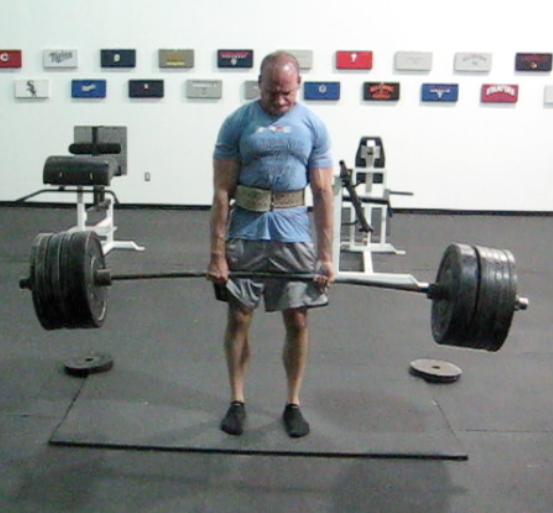
5 Deadlift Technique and Programming Lessons
Yesterday, I deadlifted 600 for three reps for the first time. This is a number I’ve been after for quite some time.
After the lift, I got to thinking about some good lessons I could “teach” in light of this milestone for me. Here are five quick Saturday morning thoughts:
1. Personal records sometimes happen when you don’t expect them.
I honestly didn’t feel particularly great when I started the training session yesterday. In fact, if you’d asked me prior to the lift if I was going to be setting a PR in the gym that day, I would have said, “Absolutely not.” However, a thorough warm-up and a few extra sets of speed deadlifts on the “work-up” did the trick. Make sure to never truly evaluate where you stand until you’ve actually done your warm-up.
2. It’s really important to take the slack out of the bar.
If you watch the video above, you’ll notice that I pull the bar “taut” before I ever really start the actual lift. Every bar has a bit of slack in it, and you want to get rid of it early on. Check out this video on the subject:
You can actually get a feel for just how much slack there is in the bar if you observe how much it bends at the top under heavy weights. This doesn’t happen to the same degree with “regular” barbells.
3. Don’t expect to accomplish a whole lot in the training session after a lifetime PR on a deadlift.
Not surprisingly, heavy deadlifting wipes me out. Interestingly, though, it wipes me out a lot more than heavy squatting. From a programming standpoint, I can squat as heavy as I want – and then get quality work in over the course of the session after that initial lift. When the “A1” is a deadlift, though, it’s usually some lighter, high-rep assistance work – because I mostly just want to go home and take a nap after pulling any appreciable amount of weight!
4. Percentage-based training really does have its place.
For a long time, I never really did a lot of percentage-based training for my heavier work. On my heavy days, it was always work up, see how I felt, and then make sure to get some quality work in over 90% of my 1RM. As long as I was straining, I was happy. Then, I got older and life got busier – which meant I stopped bouncing back from these sessions as easily. Percentage-based training suddenly seemed a lot more appealing.
I credit Greg Robins, my co-author on The Specialization Success Guide, with getting me on board the percentage-based training bandwagon. He was smarter than me, and didn’t wait to get old to start applying this approach when appropriate.
5. You’ve got to put force in the ground.
This is a cue I’ve discussed at length in the past, but the truth is that I accidentally got away from it for a while myself. Rather than thinking about driving my heels through the floor to get good leg drive, it was almost as if I was trying to “just lift the bar.” It left me up on my toes more than I wanted, and my hamstrings got really cranky.
I took a month to back down on the weights and hammer home the heels through the floor cue with speed work in the 50-80% range, and it made a big difference. I’ve got almost 15 years of heavy deadlifting under my belt, and even I get away from the technique that I know has gotten me to where I am. Technical improvement is always an ongoing process.
Looking for even more coaching cues for your deadlift technique? Definitely check out The Specialization Success Guide. In addition to including comprehensive programs for the squat, bench press, and deadlift, it also comes with detailed video tutorials on all three of these “Big 3” lifts. And, it’s on sale at the introductory $30 off price until tonight at midnight. Check it out HERE.




